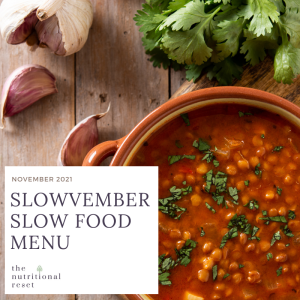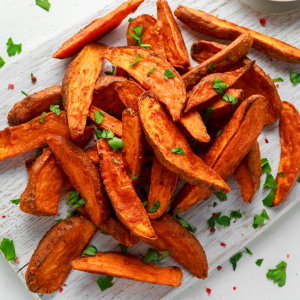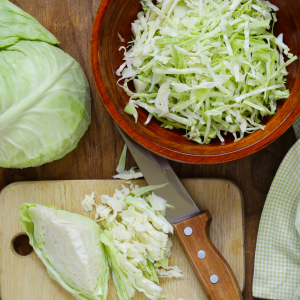 My last blog post, Go With the Slow, discussed how it is natural to crave not only more food but more calorically dense food as the outside temperature drops. This is because your body requires more energy just to keep its core temperature where it should be. And it wants to prepare itself for winter by adding a little protective, insulating fat. The traditional winter diet for those of us living in Northern climates is rich with starchy root vegetables, proteins and fats for these reasons but also because things like leafy greens simply were not available at this time of year.
My last blog post, Go With the Slow, discussed how it is natural to crave not only more food but more calorically dense food as the outside temperature drops. This is because your body requires more energy just to keep its core temperature where it should be. And it wants to prepare itself for winter by adding a little protective, insulating fat. The traditional winter diet for those of us living in Northern climates is rich with starchy root vegetables, proteins and fats for these reasons but also because things like leafy greens simply were not available at this time of year.
I favour local, seasonal eating as much as possible. The food is fresher. After all, it hasn’t had to travel crazy distances to get to our table. I like to support our local farmers and food businesses. I advocate home-cooked food too.
These concepts are all embraced within the Slow Food movement, first created in Italy in 1986 to promote alternatives to fast food. So I designed my Slowvember Slow Food Menu to encourage you to Go With the Slow and embrace these Slow Food concepts.
How? By cooking food that is:
- home-cooked and
- slow-cooked (two recipes are made in a slow cooker),
- using seasonal, local ingredients.
I discuss two of these seasonal ingredients (sweet potatoes and cabbages) below. But I can’t pass up an opportunity to layer on a little lecture on why I love lentils.
Lots to love about lentils…
- they cook more quickly than other legumes,
- 1 cup cooked provides almost 18 grams of protein and more than one-third of the iron you require each day (so they are a great option for meatless meals),
- 1 cup cooked provides more than 15 grams of gut-healthy fibre,
- they can be used many ways – think curries, salads, stews, soups, casseroles, “meat”-loaf, burgers and even desserts (have a look at this post for more about legumes and how to cook im-pulse-ively),
- they are inexpensive and
- dried lentils keep well in your pantry so you always have on hand the makings for a healthy meal.
And you are supporting Canadian farmers. In fact, Canada is the world’s leading producer and exporter of lentils. These are mostly farmed in Saskatchewan, although Ontario is home to one lentil farmer near Elora, Lau-te-da Lentils. So please do try the Moroccan lentils. Another easy lentil recipe I love is Chef Michael Smith’s Umbrian Lentils & Sausage.
I hope you enjoy these slow food, slow-cooked favourites of mine. And remember to Go With the Slow by slowing down at meals. Take the time to smell, chew and savour your food before you swallow it. Your digestive system will thank you!
To receive the recipes in the Slowvember Slow Food Menu, sign up here.
Slowvember Slow Food Menu
Breakfast: Spinach & Sweet Potato Frittata (frittatas are awesome make-ahead breakfasts and super for using up bits & bobs of veg)
Lunch: Slow Cooker Cabbage Roll Soup (this soup is “cabbage rolls, deconstructed”, so a lot less work; and you can make it even less work by using frozen riced cauliflower)
Dinner: Slow Cooker Moroccan Lentils (if you are feeling carnivorous on a cold evening, pair this with spicy merguez sausages; I also enjoy a fennel, beet and orange salad alongside)
Join The Nutritional Reset community here to receive this month’s recipe collection today (as well as each month to come)!
A few featured foods …
 Sweet Potatoes
Sweet Potatoes
Yes, sweet potatoes are grown in Ontario, so they definitely qualify as seasonal and local. Their gorgeous orange colour comes from beta-carotene (one serving has four times the RDA). This converts to Vitamin A and supports the health of our eyesight, skin and hair. Sweet potatoes are higher in fibre than regular potatoes. And although they are sweeter, they have a lower glycemic index.
As with most foods, how you prepare them can make a big difference. Sweet potato fries are healthy when they are baked but not when they are deep fried. I often bake sweet potato fries to accompany some greens and grilled meat or fish. Make extra and add them to your breakfast or lunch the next day! You can even use shredded or puréed sweet potato to sweeten up baked goods. And click here if you are game to try Sweet Potato Porridge.
 Cabbage
Cabbage
I got a cabbage the size of a basketball recently that could easily feed us for over a week. It is unquestionably one of the most budget friendly vegetables out there, not to mention versatile. Use it in slaws, stirfries or soups, like the one in this menu. Make actual cabbage rolls. Use the leaves as wraps for all manner of fillings. Try your hand at sauerkraut or kimchi!
Cabbage also has many health benefits. It is super high in vitamin C and vitamin K. And it’s packed with insoluble fiber, which keeps your digestive system healthy by keeping you regular. It is also rich in soluble fiber, which is food for friendly species of gut bacteria that help protect our immune system.
Cooking your own food is the single most impactful step you can take to improve your health and energy!
I hope you enjoy the Slowvember Slow Food Menu. Sign up here to receive the download link for this latest Menu of the Month. And if you want to cook more of your own food but don’t know what to make or have the time to organize your own menus and shopping lists, The Nutritional Reset offers a meal planning service. It makes preparing tasty, nutritious meals a snap. Click here to find out more.